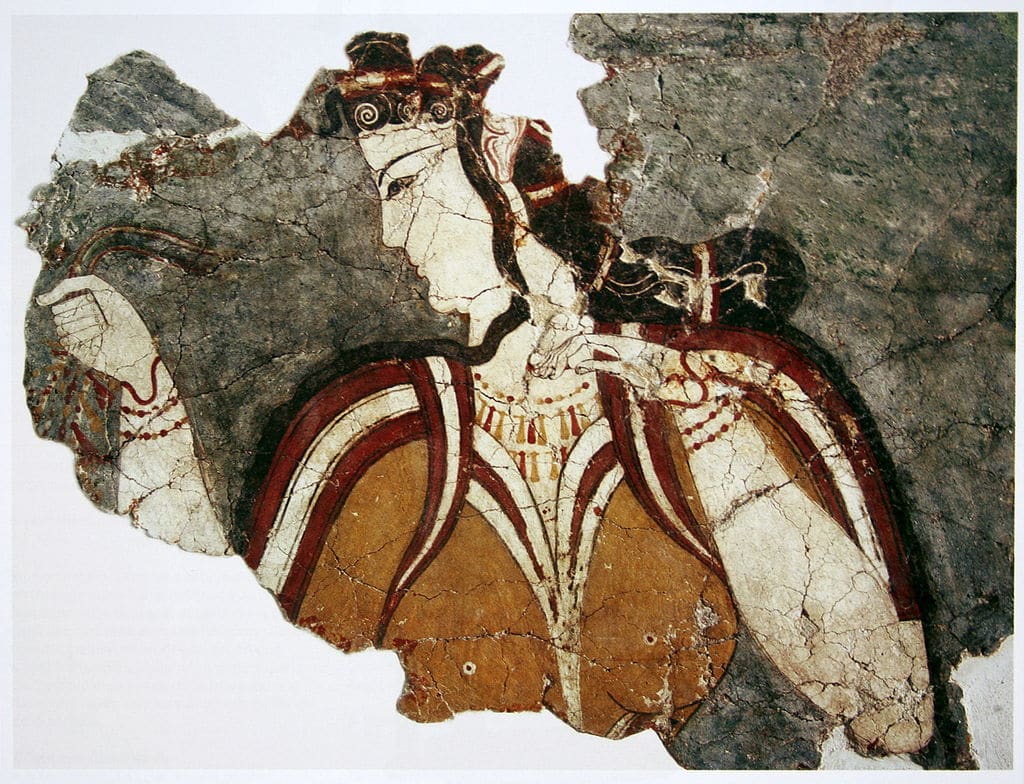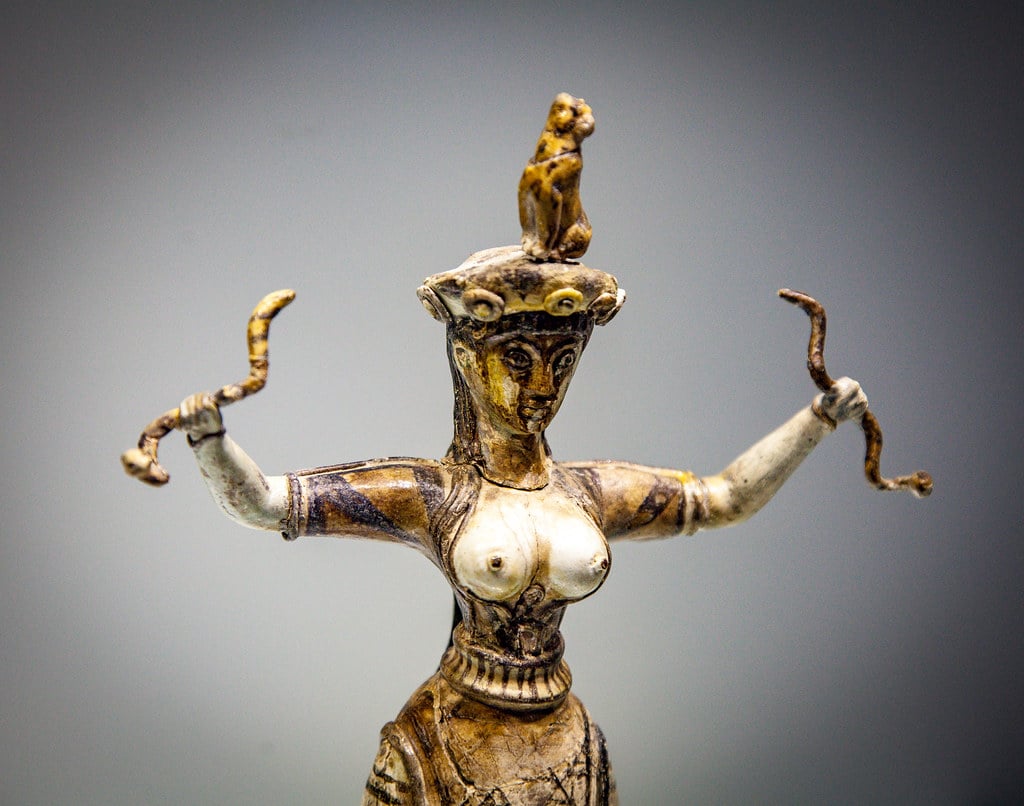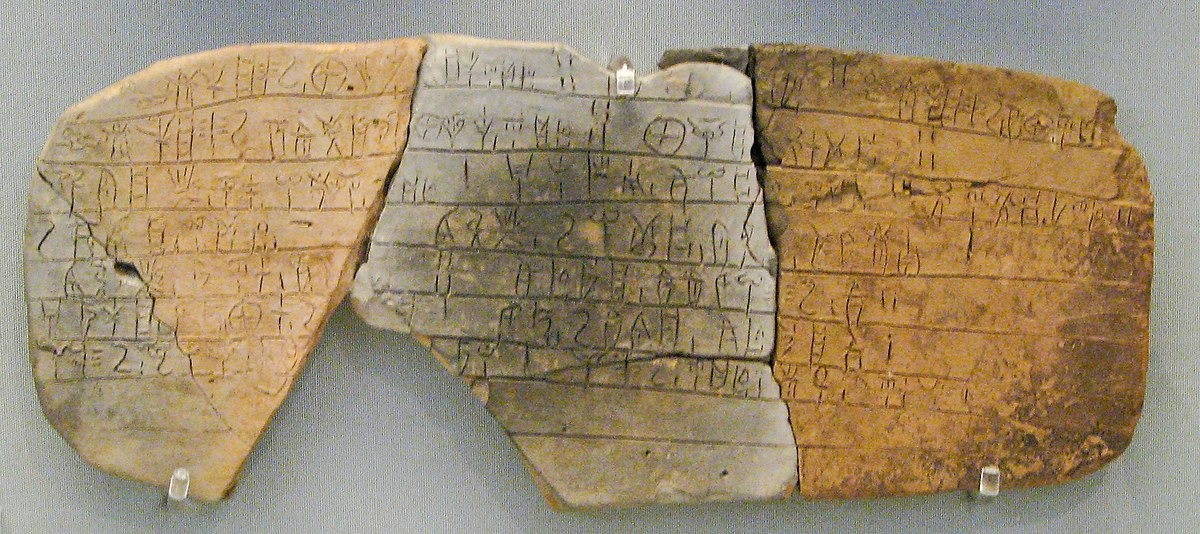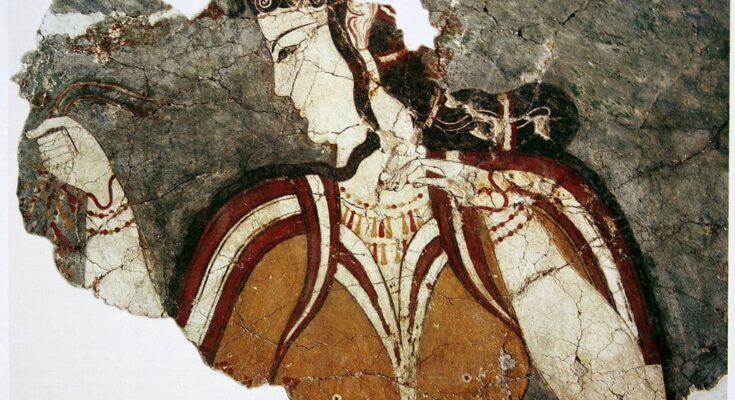
The history of ancient Greece, vast and deeply influential, is often said to have begun around 1200 BC and stretched until the death of Alexander the Great in 323 BC. This period coincides with the transition from the Bronze Age, an era that spanned from approximately 3000 to 1000 BC.
During the Bronze Age, ancient Greece as we know it today—with its bold heroes and ubiquitous Gods—did not exist. However, long before the rise of classical Greece, other civilizations had already left their mark—most notably the Minoans and Mycenaeans. These had their own unique religious beliefs, which are now seen as early forms of the mythology that would later develop into the Olympian gods.
The dawn of mythological gods in the Minoan Bronze Age
The Minoan civilization emerged around 3000 BC, at the tentative beginnings of the Bronze Age, on the island of Crete. Although it flourished within what is now Greece, the Minoans are not considered a “Greek” civilization—they spoke a different language and practiced their culture in different ways.
By 1450 BC, they came under the control of the Mycenaeans from the Greek mainland, which led to a fusion of the two civilizations. Before this, however, the Minoans had developed their own singular religious system, which likely influenced the beliefs and mythology of the ancient Greeks that followed.
In Minoan religion, the pantheon was “simpler” than the later Greek tradition of twelve Olympian gods. The central deity was a figure often referred to as mother goddess or “Great Mother” by scholars, and held preeminent status. In Minoan artifacts, a goddess frequently appears holding a snake in each hand, though it is uncertain whether those two goddesses are the same. Our grasp on Minoan religion is limited, as there aren’t a lot of texts available and many remain undeciphered.

Still, research has uncovered evidence of additional deities beyond this Great Mother. Among these are mostly female deities—in his book The Minoan-Mycenaean Religion And Its Survival In Greek Religion, scholar Martin Nilsson also identifies a few more goddesses from artifacts of the period.
Among these are a war-goddess, a seafaring-goddess, a Mistress of Animals, a nude goddess with birds (perhaps doves), and others. It is suggested that some of these can be associated with classical Greek goddesses like Athena or Artemis, and serve as their “precursors,” in a sense.
But what about male gods in the Minoan Bronze Age? Nilsson writes that they were “surprisingly rare.” While female deities dominated, archaeologists have identified a male figure known as the “Master of Animals.” Depicted as a young man holding a spear, he is often shown in artifacts worshipping the Great Mother—thus reinforcing her central role in Minoan religion.
The mythological gods of the Mycenaean Bronze Age: were they proto-Olympians?
The Mycenaean civilization flourished in ancient Greece during the latter part of the Bronze Age, between 1750 and 1050 BC. The Mycenaeans inhabited mainland Greece and were heavily influenced by the Minoans to develop a more sophisticated culture of their own.
Beyond material culture, the Mycenaeans likely absorbed many elements of the Minoans’ religious beliefs. According to Nilsson, several Minoan gods were integrated into the Mycenaean pantheon, to lay the groundwork of ancient Greek religion as we know it today.
However, for the Mycenaeans the most prominent deity was not Zeus, as in later Greek religion, but the god Poseidon, known in Linear B tablets as Posedao. Unlike his later role as god of the sea, Poseidon in Mycenaean religion was linked to earthquakes and revered as a river spirit of the underworld. Once again, we see the deep connection to the earth in the gods of the Bronze Age.
Apart from Poseidon, several prominent female goddesses in Mycenaean religion can be seen as proto-Olympians. An agricultural goddess, mentioned in inscriptions from Pylos, played a central role and is believed to be a precursor to Demeter. Another goddess, Pereswa, is thought to be an early form of Persephone.

Additionally, inscriptions from Pylos written in Linear B reveal the presence of other significant goddesses—they reference Atimito, believed to be an early form of Artemis, and Atana, a war goddess depicted in Mycenaean frescoes with a massive shield, her palladium. Inscriptions have also identified Diwonuso (Dionysus), Apollo, Ares, Hephaestus, as well as Zeus, god of the sky, and Hera. However, Poseidon remained the most-worshipped god throughout the Mycenaean Bronze Age.
Conclusions amidst the gaps in evidence
While the evidence of mythological gods in the Bronze Age who served as proto-Olympians is intriguing, it’s important to remember that, as Nilsson notes, archaeologists can only “form hypotheses.” Much of what we know about the ancient Greek gods comes from texts like Homer’s epics and Hesiod’s Theogony, as well as art and the work of historians.
However, nothing comparable has been found from the Minoan or Mycenaean eras. The only glimpses we can get of their gods come mostly from inscriptions—many still undecipherable—and artifacts. Nevertheless, one conclusion we can safely draw is that the ancient Greek gods had their precursors during the Bronze Age in Greece.



